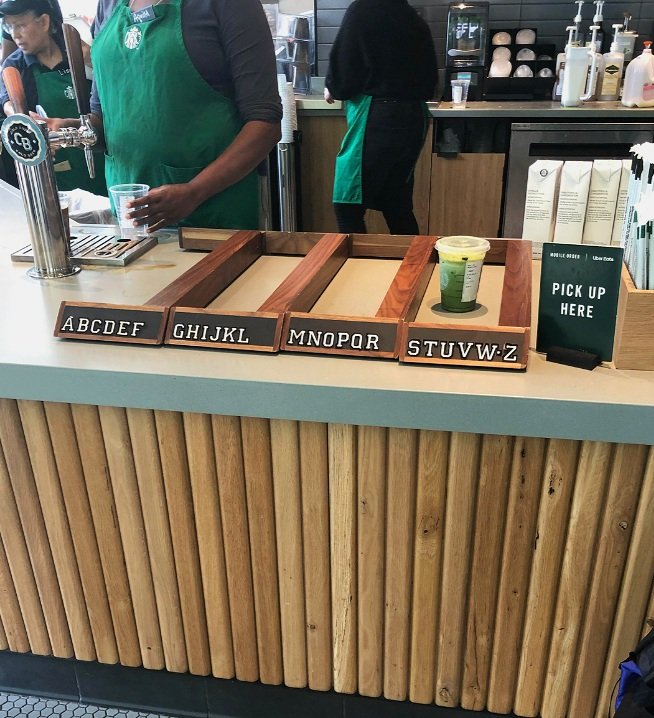Starbucks
Rapid cardboard prototype created for Starbucks to demonstrate 1:1 Scale customer interaction within their Savannah Airport location.







My Team & My Role
Tools Used
Project Outline
We were tasked with creating an investigative rehearsal method prototype based on the current state of Starbucks.
We prototyped a kiosk-style Starbucks like the one in the Savannah-Hilton Head Airport.
This was an entire class group project. The work was split into sections of the experience.
My team and I created the employee work area behind the bar.
Miro, Cardboard, Packing tape, Scissors,
Research
Based on feedback from the interviews we discovered…
Customers waiting in line want:
The ability to browse the store menu
View food items
Plan their order before they reach the front counter
Ordering
Starbucks employees who take orders are also responsible for making the orders and creating a successful handoff back to the customers.
Employees are also responsible for managing the cleanliness of the store at all times.
Paying
Customers can pay through various channels: Starbucks Mobile App, Cash or Gift cards, or credit or debit cards.
After customers pay, they typically wait 3 to 5 minutes for their order to be ready for pickup at the pickup station.
Pick-up
Starbucks customers can pick up their orders at the end of each counter.
When customers pick up their orders, they can head straight to the coffee condiment bar directly behind or next to the pick-up location to add the finishing touches to their drinks or food orders.
Our research team experienced the Service undercover, and after observation concluded the experience was summarized in these 3 steps.
Students went to a Starbucks to conduct contextual interviews with a store manager and a barista.
The goal of contextual inquiry is to understand better the relationships between jobs to be done and unmet employee needs.
Planning
Students were constrained to an 8'x10' layout.
Students brainstormed together and created an ideal floorplan layout based on employee feedback during interviews and the Savannah Hilton head Airport kiosk.
Materials
Students were provided new cardboard boxes due to the relatively inexpensive material cost.
Prototyping in cardboard is beneficial to teams because it is easy to manipulate and can be quickly revised after validating your prototype with customers.
Construction
This is me in the center of the cardboard boxes.
Students prototyped all touch-points of the Starbucks kiosk service to create a low-fidelity experience from a barista's and customer's perspective.
Interaction Testing
Investigative Rehearsal of the Experience
The customer waits in line, which has Starbucks merchandise wrapped around. Once closer to the front, the customer can see pastries and snacks available to purchase.
2. The customer orders from the front barista who inputs the customer's order and a ticket is printed.
3. The customer chooses to pay using their card on the electronic payment device.
6. The customer waits for the order next to the pick-up counter.
7. The customer picks up the order from the pickup counter
8. The customer goes to the coffee topping station for more milk/cream, and extras.
5. Baristas prepare order :D
Delivery of Project
The final deliverable of this prototype was moved piece by piece to the Majors and Minors Fair to share our love of Service Design with new and existing students at SCAD.
Students, faculty, and guests were able to interact with our 1:1 scale prototype, (and they loved it).
I and other members of the SCAD Service Design club facilitated our section of the Fair with our professors. We talked about our work and helped a few students to find their love of Service and change their majors!




















